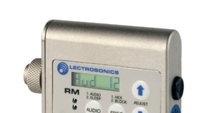Demand for more wireless microphone channels fuels white space controversy

For at least the past year, wireless microphone users have said that they fear that the use of white space spectrum may cause interference with their devices during sports events. This is due to the ever-increasing demand for more wireless bandwidth and unused spectrum in a world of competing interests.
HDTV and multichannel surround sound at sporting events means providing at least 5.1 channels for live broadcasts. Even more than that, pressure is constantly increasing to place wireless transmitters on nearly ever player to get the big impact that surround allows.
All of this activity is playing out against a backdrop of major change in wireless technology. The loss of the 700MHz band for licensed wireless mic operation after the analog television shutoff next February leaves a potential bandwidth problem for users with older equipment. However, the 500MHz and 600MHz bands being abandoned by the analog transmitters are available for licensed wireless operation. And there’s the possibility the FCC will allow licensed wireless mic users to eventually use the proposed GWMS ban of 2020MHz-2025MHz.
Wireless microphones have also changed a lot in recent years. They now have improved front-end filters, better antennas, higher sensitivity and selectivity, digital tone squelch and improved diversity. Today, it’s easier to get multiple frequencies into a central band. Microphones can be adjusted to work nearly anywhere, and newer all-digital wireless models offer even better interference protection.
New tiny designs of wireless transmitters are shock and moisture resistant, easily attaching to players’ shoulder pads and sustaining the impact of games. Multiply the number of users wearing such mics and one gets a picture of the increased need for bandwidth. At the rate wireless microphone use is growing in athletics, it could be just a few years until sports venues want the white spaces for themselves.
The professional video industry's #1 source for news, trends and product and tech information. Sign up below.
